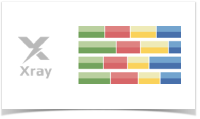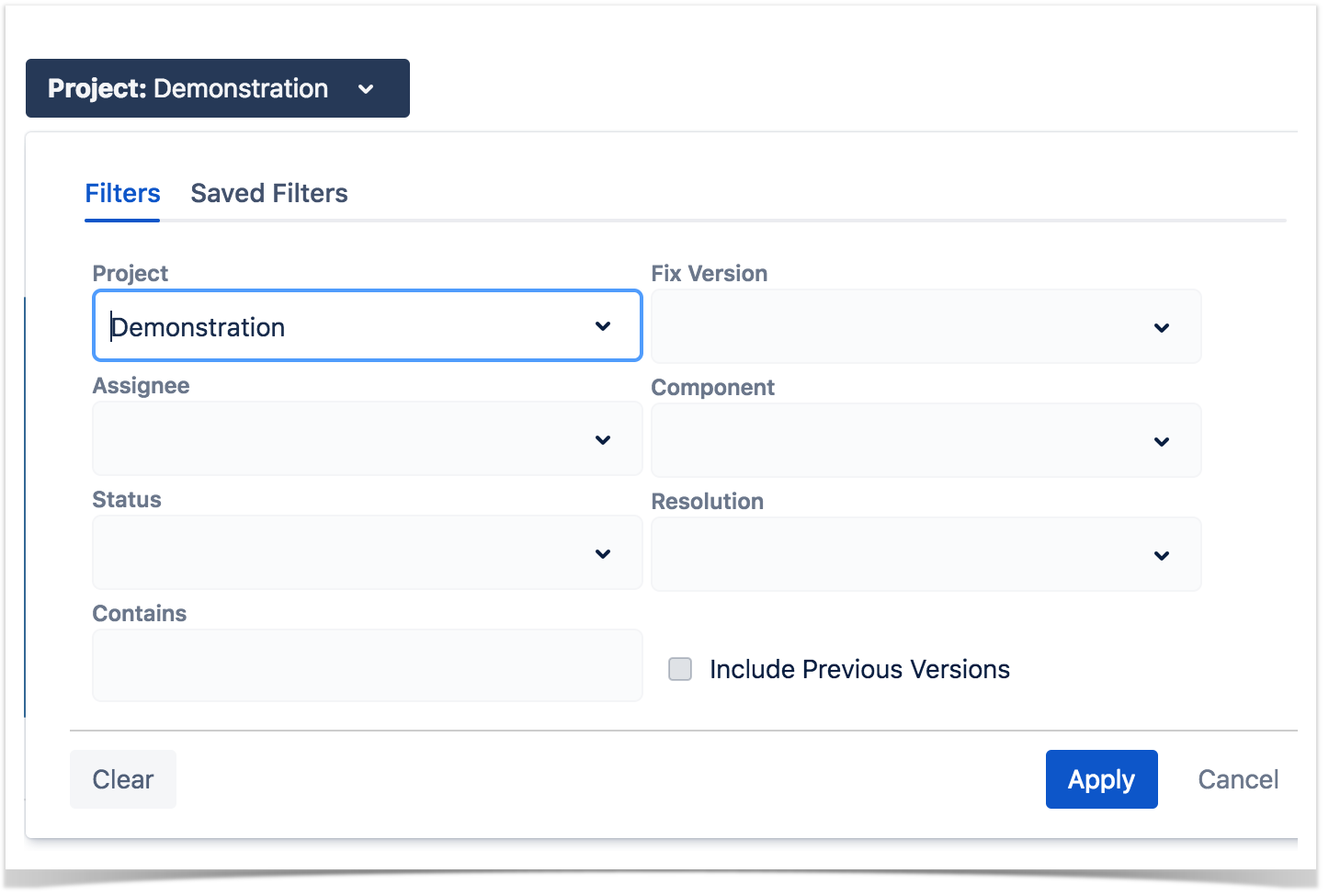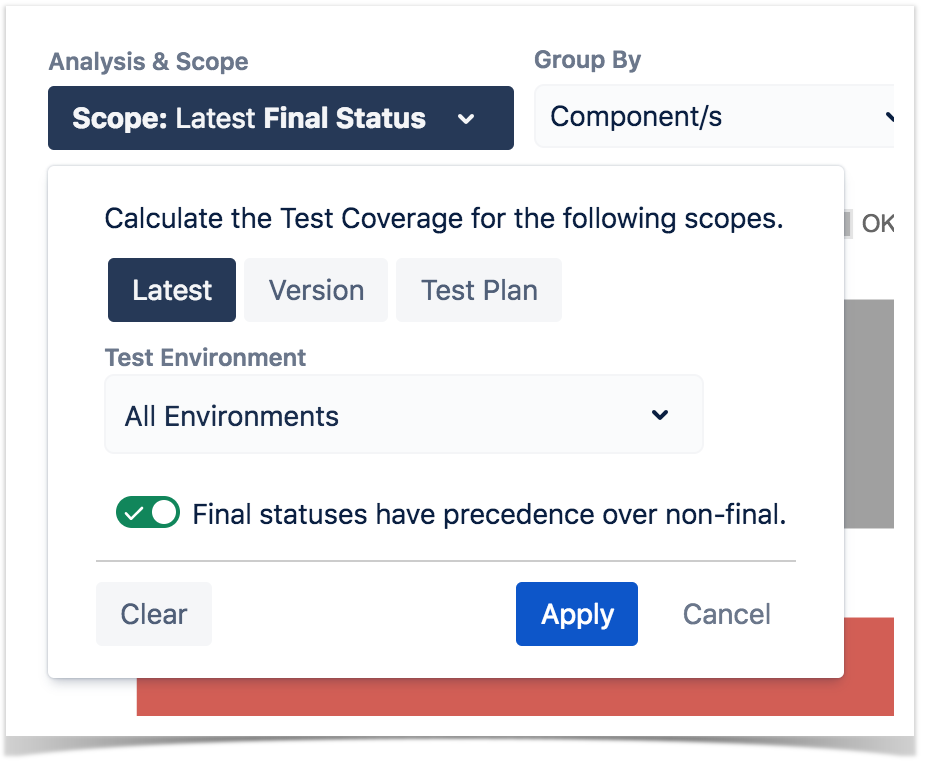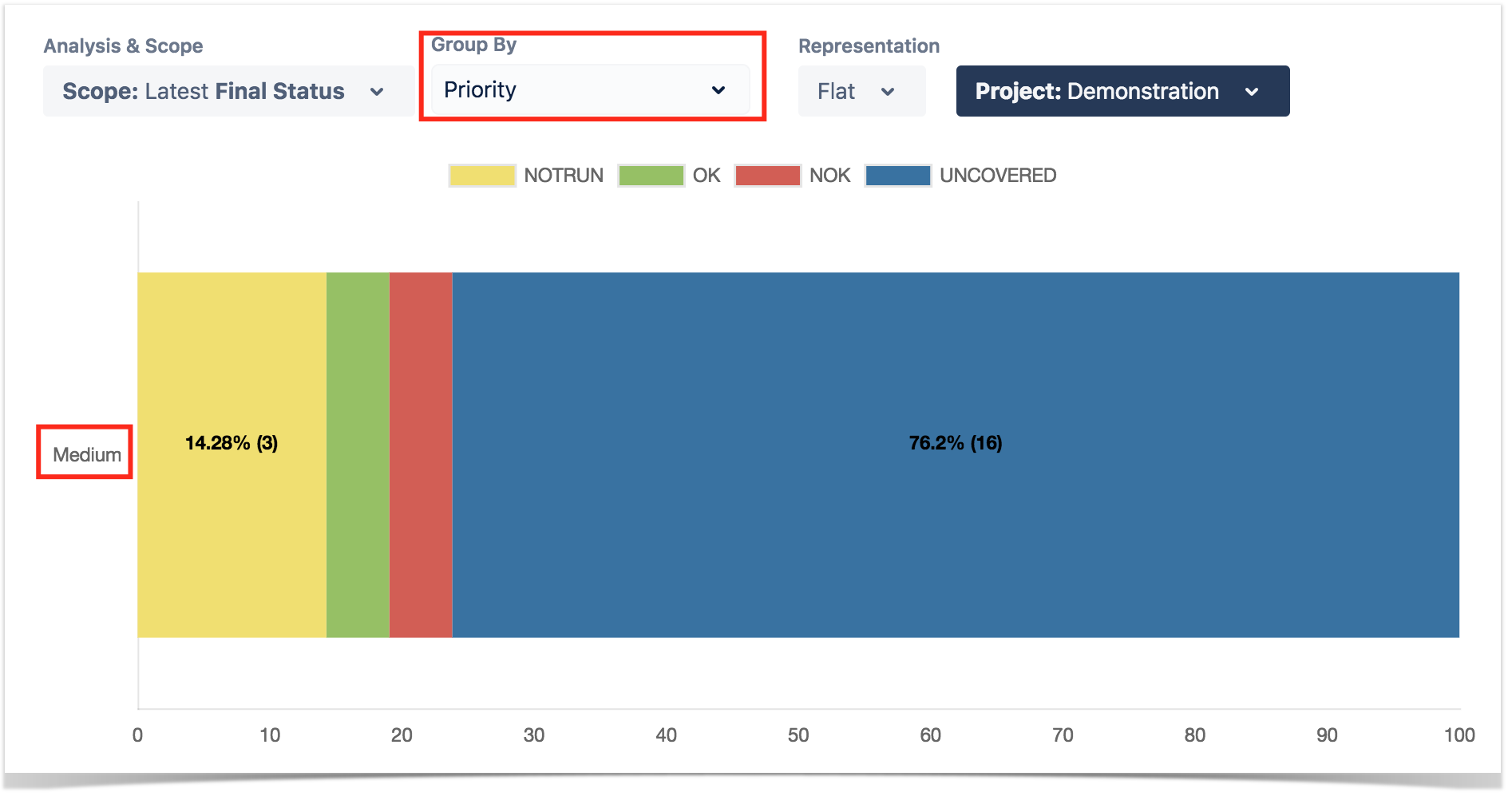Calculates the test coverage status for a list of covered issues, in a normalised horizontal stacked bar chart, for the selected version, or Test Plan, and/or Test Environment.
Please note
To use this report, you must have some configured Issue Types configured as coverable issue types, in the project settings. More info in Project Settings: Test Coverage
In order to analyze the current status of your release, or even other releases from the past, you need to evaluate the status of requirements and other covered issues, taking into account the respective results.
You might want to analyze just the requirements implemented in a given version or you may want to analyze requirements from earlier versions based on your regression testing.
The Test Coverage report provides the means to analyze your requirements statuses in real-time.
How to use
This report is accessible either from the Xray icon on the left sidebar of the project or from the standard Reports icon, which includes other kind of reports besides Xray.
You need to configure the source data for the report (e.g. the requirements or other covered issues) and how to evaluate the status for each one of the item being shown.
Source data
Source "requirement" issues can be directly provided using a saved filter or by specific requirement fields:
- Saved filter: a saved filter containing requirement issues
- Project: project
- Fix Version: version assigned to the requirement (you can also choose whether to include the previous versions - equivalent in JQL to fixVersion <= X. The default value for this option can be changed in the Xray configuration.)
- Assignee: the requirement's assignee
- Component: the component assigned to requirement
- Status: the workflow status
- Resolution: the workflow resoluton
- Contains: the requirement's key or summary
Analysis & Scope
On the left side, you can define the analysis strategy, i.e., the way you want to analyze the selected/filtered requirements. You can choose either to analyze by Version or Test Plan, and then complement it with a Test Environment.
If you choose analysis by Version, then the latest results from Test Executions for the specified version are taken into account. If you choose Test Plan, only Test Executions (and related results) associated with the given Test Plan are considered during the calculation of the requirement status.
If you specify the Test Environment, then only the executions that ran in the specified environment are considered.
You can visually group the requirements by Priority, Component or other fields, so you can analyze requirements from different perspectives.
Tips
For more information, please see the Requirements Coverage Analysis.
Example
Each bar on the chart represents a group of Requirements with a different value provided by the grouping field. Stacked within each bar are the Requirements grouped by coverage status: OK, NOK, NOT RUN, UNKNOWN and UNCOVERED.
Because this is a normalized chart, the bars are always 100% wide.
The Overall Coverage requirements chart is interactive. Hovering over each bar shows a small popup with the information on the specific series (Status, Grouping Field and Percentage). You can deactivate a particular series by clicking it in the series legend.
The chart also supports drill-down. When a section is selected, a table appears below the chart with the Requirement issues.
For each Requirement issue, the table shows the following indicators:
- Total Tests: total amount of linked tests
- Passed: total amount of tests passing (i.e. the ones whose status is mapped to the Test Coverage status "OK")
- Failed: total amount of tests failing (i.e. the ones whose status is mapped to the Test Coverage status "NOK")
- Other: total amount of tests whose current status is mapped to the Test Coverage statuses "Not Run" or "Unknown"
It also contains a column with a progress bar that shows the completeness of each issue.
Some values may provide a link, so you can be redirected to the respective entities corresponding to the shown number.







